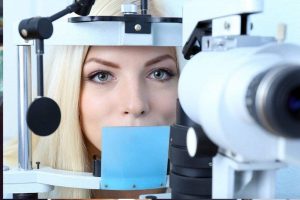Yes, research has shown that African Americans have the highest rates of diabetic eye disease.
In this article, we will discuss the causes and risk factors for diabetic eye problems, the types of diabetic eye disease, and why African Americans may be more susceptible to these conditions
Diabetes and the Eyes
If not managed correctly, diabetes can cause vision loss and even blindness
Diabetes is a chronic disease that affects how the body processes blood sugar (glucose). Over time, high blood sugar can cause damage to various organs, including the eyes.
Diabetic eye problems refer to a group of eye conditions that can occur as a result of diabetes, such as diabetic retinopathy, diabetic macular edema, cataracts, and glaucoma.
Causes and Risk Factors for Diabetic Eye Problems
Diabetic eye problems occur when high blood sugar levels damage the small blood vessels in the retina, the light-sensitive tissue at the back of the eye. This damage can cause the blood vessels to leak or close off, leading to a variety of eye problems.
Several factors can increase your risk of developing diabetic eye disease, including:
- Duration of Diabetes: The longer you have had diabetes, the higher your risk of developing diabetic eye problems.
- Poor Blood Sugar Control: High blood sugar levels can damage the blood vessels in the retina, leading to eye problems.
- High Blood Pressure: People with high blood pressure are more likely to develop diabetic eye disease.
- High Cholesterol: High cholesterol levels can cause fatty deposits to form in the blood vessels, increasing the risk of diabetic eye disease.
- Smoking: Smoking can damage the blood vessels in the eyes, increasing the risk of diabetic eye disease.
Types of Diabetic Eye Disease
There are several types of diabetic eye disease, including:
- Diabetic Retinopathy: This condition occurs when high blood sugar levels damage the blood vessels in the retina, causing them to leak or close off. This can lead to blurry vision, floaters, and even blindness if left untreated.
- Diabetic Macular Edema: This condition occurs when fluid leaks into the macula, the central part of the retina responsible for sharp, detailed vision. This can cause the macula to swell, leading to blurry vision and vision loss.
- Cataracts: Cataracts occur when the lens of the eye becomes cloudy, causing vision impairment or loss. People with diabetes are more likely to develop cataracts at a younger age than those without diabetes.
- Glaucoma: Glaucoma occurs when fluid builds up in the eye, causing pressure to increase. This can lead to a damaged optic nerve. People with diabetes are at higher risk of developing glaucoma.
Do African Americans Have the Highest Rates of Diabetic Eye Disease?
Yes, research has shown that African Americans have a higher risk of developing diabetic eye disease than most other racial and ethnic groups.
Several factors may contribute to this higher risk, including:
- Genetic Predisposition. Some genetic factors may make African Americans more susceptible to diabetic eye disease.
- Health Disparities. African Americans are more likely to have other health conditions that increase the risk of diabetic eye disease, such as high blood pressure and obesity.
- Lack of Access to Healthcare. African Americans are more likely to lack access to healthcare, which can lead to poorer diabetes management and an increased risk of diabetic eye disease.
- Cultural and Socioeconomic Factors. African Americans may be more likely to have cultural and socioeconomic factors that contribute to poor diabetes management and an increased risk of diabetic eye disease.
How To Minimize Your Risk of Developing Diabetic Eye Disease
No matter your race, there are steps you can take to minimize your risk of developing diabetes-related eye diseases.
- Maintain a healthy weight
- Take your prescribed medications as recommended by your doctor
- Stay active and exercise regularly
- Quit smoking
- Keep your A1C, blood pressure, and cholesterol under control
Whether your or a loved one has been diagnosed with diabetes, or are at risk of developing it, the best thing you can do to preserve your healthy vision is to visit your local optometrist and have regular comprehensive exams.
Diabetic eye diseases often begin without any noticeable symptoms.
Early detection and treatment through regular eye exams offers you the best chance of preventing diabetes-related vision loss. If you have diabetes, contact your optometrist today to schedule your eye exam.








